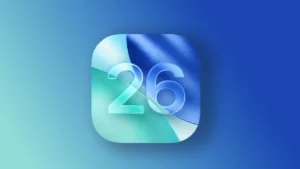If you’ve noticed your iPad’s battery draining much faster than usual after updating to iPadOS 26, you’re not alone. Many users are reporting a significant drop in battery life, with some finding that even using Low Power Mode doesn’t help, as described in this Apple Community thread. This issue is often caused by the intensive background processes that run after a major software update, but can also be due to software bugs or apps that are not yet optimized for the new system.
In this article:
ToggleWhy Your iPad’s Battery Drains After an Update
After a major update like iPadOS 26, your iPad performs a lot of “housekeeping” tasks. It re-indexes all of your files for Spotlight search, scans your photo library for new features, and re-optimizes your apps and system files. These processes are demanding on the processor and consume a significant amount of power, which leads to temporary, but noticeable, battery drain. Additionally, new features and visual effects in iPadOS 26 can be more resource-intensive than previous versions, contributing to higher ongoing power consumption.
How to Fix the iPadOS 26 Battery Drain Issue
Follow these steps to diagnose and resolve excessive battery drain on your iPad. It is best to try them in order, as the issue is often resolved with the first few solutions.
1. Wait for Background Processes to Complete
This is the most common solution and requires only patience. Your iPad needs a few days to finish its post-update tasks. During this time, battery drain will be higher than normal.
- Connect your iPad to a power source and a stable Wi-Fi network.
- Leave it idle, preferably overnight, for at least two to three days.
- Performance and battery life should return to normal once the indexing and optimization are complete.
2. Update to the Latest Version of iPadOS
Apple often releases small follow-up updates (like iPadOS 26.0.1) that include bug fixes for known issues like battery drain.
- Go to Settings > General > Software Update.
- If a new update is available, tap Download and Install.
3. Update Your Apps
An app that hasn’t been updated for iPadOS 26 can run inefficiently and drain your battery.
- Open the App Store.
- Tap your profile icon in the top-right corner.
- Scroll down to the pending updates section and tap Update All.
4. Identify and Manage Battery-Draining Apps
iPadOS allows you to see exactly which apps are consuming the most power.
- Go to Settings > Battery.
- Scroll down to view a list of apps ranked by their battery usage.
- If an app you rarely use is high on the list, it might be malfunctioning. Consider updating, reinstalling, or deleting the app.
5. Force Restart Your iPad
A force restart can clear temporary glitches and stop runaway processes that might be draining your battery.
- Press and quickly release the Volume Up button.
- Press and quickly release the Volume Down button.
- Press and hold the Top button until you see the Apple logo, then release.
6. Limit Background App Refresh
This feature lets apps update in the background, but it’s a common source of battery drain.
- Go to Settings > General > Background App Refresh.
- You can either set it to Off completely or disable it for specific apps that don’t need to be constantly updated.
7. Adjust Screen Brightness
Your iPad’s display is one of its most power-hungry components. Reducing its brightness can have a big impact on battery life.
- Go to Settings > Display & Brightness.
- Lower the brightness manually or turn on Auto-Brightness to let your iPad adjust it for you.
8. Reset All Settings
If the problem persists, resetting your settings can resolve underlying software conflicts without deleting your personal data like apps, photos, or documents.
- Go to Settings > General > Transfer or Reset iPad.
- Tap Reset > Reset All Settings. You will need to re-enter Wi-Fi passwords and customize your settings again afterward.
If none of these solutions work, contact Apple Support.


